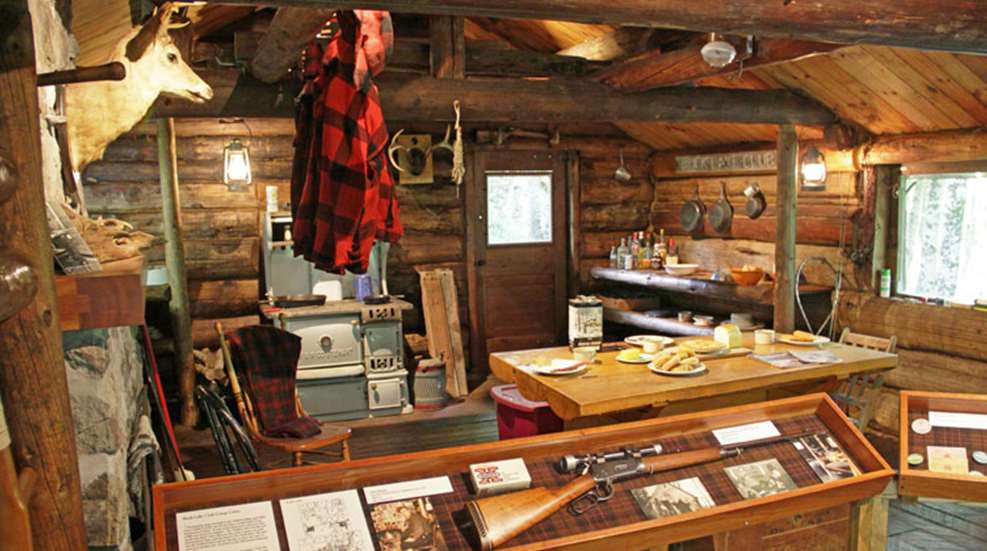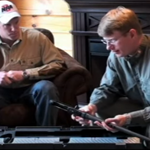
Take a look at a map of New York and in the northeast corner of the state you’ll see a large green blob marked Adirondack Park. Larger than the state of Massachusetts, the park is a unique combination of both public and private lands, about three million acres of each, designated by state law as “Forever Wild.” An extremely rugged yet beautiful region, the Adirondacks are made up of lakes, rivers, streams and beaver ponds of all sizes, and all are surrounded by pine and fir-clad mountains, accented with the white bark of birch trees. Forty-six high peaks are found in the Adirondacks, the tallest being Mount Marcy at 5,344 feet. Climb all of them and you join an elite club known as the Adirondack Forty-Sixers.
The best way to experience the Adirondacks is firsthand: go hiking, kayaking or canoeing, camping, fishing or hunting. Or just sit beside a quiet mountain lake and listen to a loon call from across the still waters. But sometime during your stay, set aside one day to visit the Adirondack Experience, a state-of-the-art museum near the small village of Blue Mountain Lake. Formerly known as The Adirondack Museum, the Adirondack Experience is not a single building; rather, it's a campus of no fewer than 20 structures of various sizes set on 121 acres, all chronicling the history of the Adirondacks. Beautifully curated, the museum combines original artifacts with interactive exhibits and hands-on activities for both adults and children. For instance, kids can break up a virtual log jam in a whitewater river, or set off an explosive charge in a virtual mineshaft.
The exhibit that will appeal to many NRA Family readers most is Woods and Waters. One of the four main exhibit halls, it explains the history of hunting and fishing in the Adirondack wilderness during the late 1800s and early 1900s, a time when the Adirondacks were first being discovered by the titans of American industry. As a way of escaping the heat and humidity of eastern cities during summer, these multi-millionaire industrialists built large, extravagant lodges in the mountains for their family and friends to enjoy. Some of these “camps,” as they came to be known, were so large that they required an extensive staff of workers to make sure every visitor had a good time while “roughing it” in the woods. Out of this arrangement evolved one of the most famous and iconic figures of the era: the Adirondack guide.
Wilderness guides were employed to take guests fishing, hunting, camping or just simply sightseeing, a typical excursion lasting anywhere from a single day to an extended backcountry trip of a week or more. And during that time the guides were expected to do most if not all the work. They set up camp, cooked, sawed and chopped firewood, rowed or paddled the boat across the lakes, then lugged it over the many portages (called “carries”), some extending over a mile long. And if that weren’t enough, guides were also expected to entertain guests around the campfire at night with adventurous and humorous stories of the wilderness. Some even sang for their “sports,” as the guests came to be known. And for all their work, the best guides earned only about two to three dollars per day, plus a generous tip at the end of a trip if they were lucky.
Like any hunting and fishing guide today, Adirondack guides were also expected to make sure their “sports” were successful, that they caught fish or shot a deer. Two deer hunting methods used at the time—both illegal* today—were “hounding” and “jacking.” Hounding involved turning a pack of dogs loose to chase and eventually drive deer from the thick woods into a lake where a hunter could get a shot from a boat. Jacking, also known as “jacklighting,” was done at night. As a hunter sat in the front of a boat or canoe, the guide would quietly row or paddle him around the shoreline of a wilderness lake. A light, usually a burning pine knot, hung from the bow of the boat, illuminating the eyes of a deer long enough for the hunter to take a shot.
In addition to the Adirondack guide, there is a second legendary icon that has emerged from that early period. Guides needed a functional watercraft that was light enough for portaging by one person, yet sturdy and stable enough to accommodate two or three people and their gear. Thus emerged the famous Adirondack Guideboat. An extensive collection of such boats, as well as early canoes, can be seen in the Boats & Boating pavilion of the museum.
Appearing similar in size and profile to a canoe, the Adirondack Guideboat is a rowboat initially developed in the 1840s. Designed with a shallow draft, its typical dimensions are 16 feet long with a 38-inch beam, weighing 60 pounds. In an 1889 edition of Forest and Stream magazine, a person identifying himself only as “Ibis” wrote of the Adirondack Guideboat:
“Of all boats, give me the flat-bottomed, light-built, graceful Adirondack. With a little practice you learn to guide it instinctively, as a bird uses its wings. It obeys the prompting of every impulse, and is so easily propelled in smooth water you never need tire.”
To row a Guideboat, you sit near the middle of the wooden craft facing backwards, glancing over your shoulder from time to time to make sure the boat is traveling in a straight line. Visitors to the museum can get a sense of the difficulty of this technique by trying a virtual version of the experience. An interactive exhibit allows you to row a Guideboat while watching video screens both in front and behind you change in relation to your rowing efforts.
But if you’d rather experience the real thing, you can hike three-quarters of a mile on a woodchip-covered woodland trail to Minnow Pond and rent an authentic Adirondack Guideboat, or classic canoe or skiff. Having heard about Guideboats for years I had to try my hand at rowing one, so made the 20-minute hike down the mountain. I found that the oars of a Guideboat are relatively long with the handles overlapping each other, requiring that you row with one hand positioned above the other. This takes some getting used to, but I eventually got the hang of it.
Have lunch, either indoors or out, at the Lake View Café and you’ll enjoy not only the food but a spectacular view of the central Adirondacks and Blue Mountain Lake. Before leaving the museum swing through the gift shop, offering an extensive selection of Adirondack-related books and other souvenirs. I just had to take home a small carving of a loon.
The Adirondack Experience is open seasonally, May 24 through October 14, seven days a week including holidays. Allow at least half a day for your visit.
* NB:There are a few places in the U.S. where it's still legal to hunt deer with hounds.





































